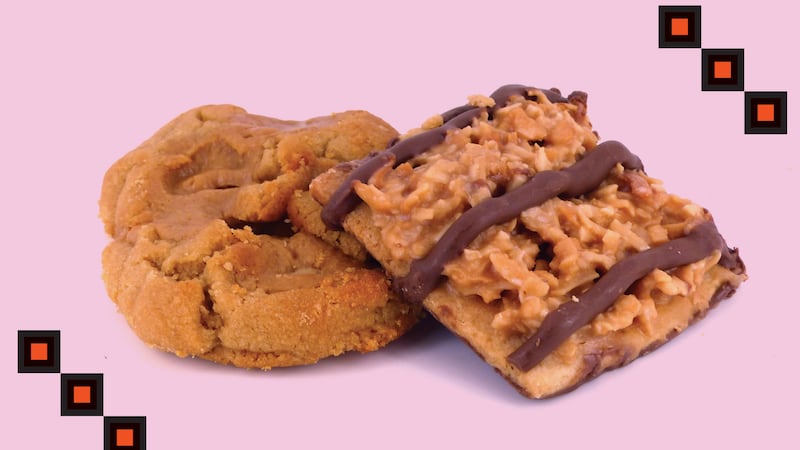When I was 16, my folks went out of town for a weekend. So I did what any sensible teenager would do and invited a few friends over to get high.
With a vacant suburban home at our disposal, we decided to make "gooballs"—an old hippie term for any number of cannabis-infused treats that take a spherical form. With a few sticks of butter and a quarter ounce of what we called "beasters" (British Columbia weed, then the gold standard), we went to work, first cooking the butter and ground flower in a pan, then mixing the infusion with melted chocolate, peanut butter and Cinnamon Toast Crunch cereal to form lumpy balls of the stuff on a cookie sheet.
The end product wasn't the culinary masterpiece we'd hoped. The flavor was blackened and oversweet. The texture was ashen and gritty. Most importantly, given how much flower we'd used, the potency was lacking. In the end, we all wished we'd just smoked our bag.
We teens didn't understand we'd missed a critical step: decarboxylation.
Maybe you've heard that word before and immediately zoned out. I can understand, because a big science word doesn't sound fun when all you want is a space cake. But decarboxylation is really the only important concept any aspiring cannabis chef needs to master, and it demystifies everything about edibles.
It's also just a fancy way of saying "heating up the weed until it'll get you high when you eat it."
In organic chemistry terms, decarboxylation refers to the removal of a carboxylic acid group from an organic compound. Why would you need or want to remove "carboxylic acid groups" from your marijuana? Well, if you don't, your pot won't get you high.
That's because when cannabis grows, it doesn't produce THC, the psychoactive compound commonly associated with the plant. Instead, it produces tetrahydrocannabinolic acid, or THCa. In fact, the high-THC cannabis you buy at the store, despite the labeling, has very little THC in it. When you see the THC percentage listed on a strain at the shop, someone's done a little math for you, understanding that the extra carbon ring accounts for 13 percent of a THCa molecule's total mass and calculating how much THC will be yielded after it's converted.
To get high, you've gotta get rid of the extra carbon ring that blocks THC from binding with your cannabinoid receptors. Cannabis sheds the carboxylic acid group when it ages or is exposed to heat. Due to differing methodologies and competing studies on the matter, there is no accepted standard temperature and time combination for the most efficient decarboxylation of cannabis, leaving an opportunity for today's teens to complete the world's best science fair project.
When you light your bowl, a quick and dirty decarb occurs. But lighting marijuana on fire isn't the only way to get rid of this extra, buzz-killer carbon ring—in fact, we can cleave it off with a simple at-home preparation that'll have you eating your weed in no time, no lab coats required.
DECARB IT YOURSELF
Here's how to decarboxylate your weed, so you can get the most out of your edibles. Not that old methods of making cannabutter are outdated—the way the pros do it now is to bake the marijuana first, then infuse it however they want.
USING YOUR OVEN:
To get started, you'll need some flower, a conventional home oven, a baking pan and some tin foil—plus a free hour to prepare and monitor your project.
First, set your oven to 240 degrees Fahrenheit, a sweet spot that'll decarb your flower but won't burn off too much of the THC you're trying to collect.
While your oven heats up, grind your flower, ensuring a fine, consistent end product.
Once prepared, evenly spread your herb on a foil-lined pan, and when the oven reaches temperature, pop in the pan, stirring every 10 minutes for a total of 40 minutes. You cannot expedite this process by turning up your oven. Exceeding 240 degrees will only damage the cannabinoids and terpenes.
AFTER YOU'RE DONE:
The end product of any decarboxylation method is flower that's ready to eat. It can be put into capsules, sprinkled atop mashed potatoes, infused into butter or oil, eaten by the spoonful, whatever. Get creative, and remember to start small.

Welcome to the Harvest Issue 2017
Nine Of Our Favorite New Portland Weed Hookups—Including One Delivery Service
The Story of Portland Cannabis As Told Through the Iconic Cultivars of the Pacific Northwest
The 17 Cannabis-Centric Events We're Most Excited About This Fall
Here's Why You Can't Get High Just By Eating Weed Flowers or Throwing Them in Brownie Mix
One Oregon Cannabis Farm Is Setting Out To Be Entirely Carbon-Neutral
How Oregon's Cannabis Industry Plans To Keep Wealth Here, and Help Right the Wrongs of the Drug War
Here's a List of Some of Our Favorite Cannabis Bargains
How To Make Pot Chips Using the Leftover Leaves From Your Marijuana Harvest
